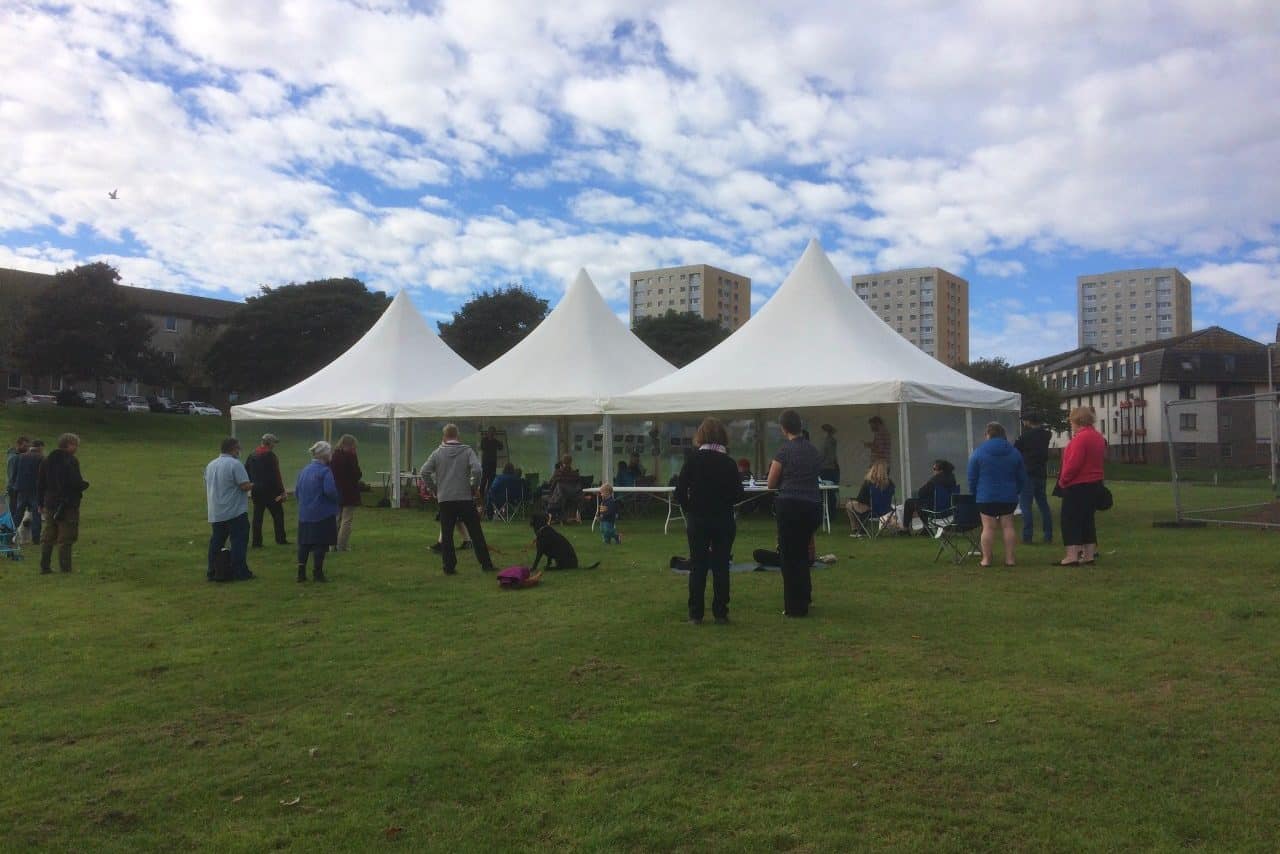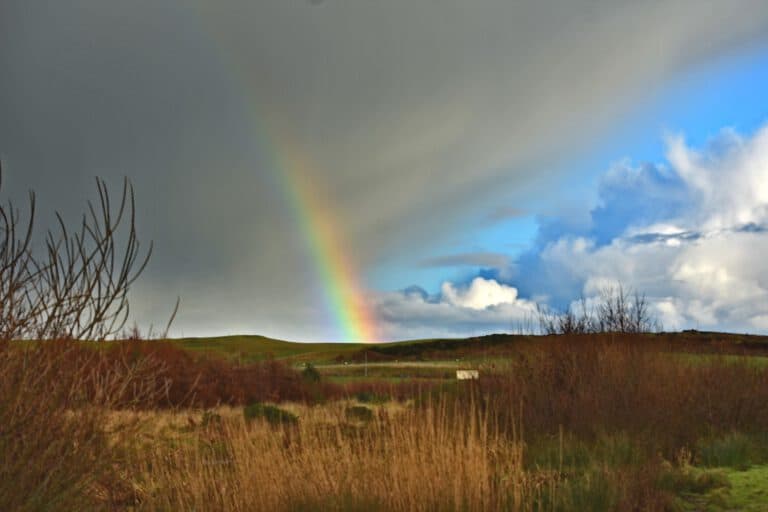Blog: Green Lairds and Urban Scotland
Scottish land markets are changing quickly due in part to global demand for low and zero carbon investments. Investors and the super-rich, the so-called “Green Lairds”, are buying up large landholdings for “rewilding” and other carbon offset projects. Communities are already impacted; for example land price increases are adding even more housing pressures in areas that already had a significant undersupply of housing. The question of how communities benefit from the transition to net zero carbon is fundamental to Scotland’s rural areas and was recently debated in the Scottish Parliament.
Community Land Scotland has been looking into these issues across Scotland, and it is clear that urban as well as rural areas are being affected by the transition to net zero. We provide examples of this below, exploring the potential for all of Scotland’s communities to benefit from the transition to net zero.

Urban experiences of net zero transition?
Urban rewilding is happening across Scotland’s built-up areas, in agricultural fields, vacant city land, community forests and many other places. Nature-based solutions provide a blueprint for a different, lower carbon, model of urban land use, but land access for, and community involvement in, these solutions is already proving problematic. There are many innovative ideas for the urban zero carbon transition, like local food growing and industrial harbour wetland remediation. These projects need access to land, and they need community support to deliver the transition in a locally accountable way which makes use of locals’ expertise and invests in community wealth. Without the community, there is a risk of transition initiatives being just another top-down urban regeneration project.
There are also cases of urban communities impacted by the infrastructure requirements of the net-zero transition. The experience of Friends of St. Fittick’s Park in Torry, Aberdeen has grown in the public domain in recent months. St Fittick’s community park is an award-winning wetland and reedbeds in the south of the city of Aberdeen. The park was invested in over the last 10 years, creating a green space that is also a sustainable drainage system reducing flooding and pollutants. This small space in the historic harbour community of Torry is well-loved and used, the only green space accessible for the local community without transportation.
The Torry community neighbouring the park is one of the most resource-deprived in Scotland. Adjacent industrial uses are a fact of life for this harbour community. In 1971 the historic fishing settlement was demolished to make way for oil development. In the following decades a sewage treatment works, two landfill sites and an incinerator have been developed here. Over the last year proposals were announced to turn St. Fittick’s Park and other nearby recreational lands into an industrial and commercial harbour expansion to facilitate the net zero transition (as an “Energy Transition Zone”). Proposed during the pandemic when this greenspace had gained even more importance, this latest project in Torry has rallied this community to protect their last remaining greenspace. They are also beginning to wonder what control over their land would mean.
Being told about plans
Proposals for the Torry Energy Transition Zone harbour expansion have come forward through the local development plan, and a planning application is likely to be next. These planning processes give local community members “consultation opportunities” to feed into decision-making processes. These consultation events require resources, technical expertise, and are an ongoing challenge for communities whose land comes under ongoing development pressure. Despite well-documented barriers to community engagement in planning, changes have been slow to materialise, and many communities are being told about projects but not given meaningful opportunity to influence them, have a degree of control in outcomes, or even a meaningful stake in the value arising from development on their doorsteps.
Barriers to community engagement with land use are an issue for all types of development. They are happening for climate projects now, and as we roll out the scale of development needed to create a zero carbon Scotland they will only intensify unless we seize the opportunity to make real changes to our system of land use and ownership.
Control over land and wealth
Scottish communities have rights to buy land and Community Land Scotland works with many communities across Scotland exploring the possibilities of buying land. Ownership brings control. It also brings the possibility of the local community directly benefiting from development. There are many ways to build community wealth, and communities across Scotland are developing financial plans for running things their way, not extracting value as profit but instead keeping it local.
To take the Torry example, while the local community has not started with the goal of owning their park, their right to pursue this expands what is possible. Ownership is one possibility; 120 Scottish communities in towns or cities already own land or buildings. With ownership, the community could control the outcome of the land in the long term. They could keep the land as their own green space which provides climate mitigation, implement their vision for development, and take the effort they currently spend trying to influence other organisations’ projects to instead develop things their way.
The Torry community will experience a range of local effects from the most recent harbour expansion with few local benefits; these impacts combine with those from decades of industrial development here. Surely the community should benefit in a meaningful way from their proximity to all this investment. Community Land Scotland has already called for a new Community Wealth Fund arising from the Net Zero Transition; a Community Wealth Fund could benefit urban areas like Torry, creating a new system where communities have a meaningful long-term benefit from renewable energy investment.
Implementing the net zero transition with an old development system that provides few benefits to communities is a missed opportunity. We need to seize this chance to create a fairer system of land use, ownership, and development, where investment benefits everyone, and value is understood not just in extractive growth but in a true balance of economic, social and environmental value.
Communities are the best stewards of the land
Communities across Scotland and the world have shown their creativity and resourcefulness in implementing low carbon land uses, like at St. Fittick’s Park. There are many urban examples of communities doing great work – the case that jumps to mind is Viewpark Conservation Group, because I joined them recently to plant oak trees as part of their community buy-out celebrations.
Viewpark community bought their greenspace in 2020, in the largest scale urban buy out yet in Scotland at 170 acres. Their work started 19 years ago, opposing commercial development on derelict greenspace of the historic Douglas Estate on the edge of Glasgow. This space is the “green lung” of the Viewpark community, yet another urban community with fewer resources, notable health problems, and infrastructure on their doorstep.
One year after purchase, the Viewpark community is quietly getting on with improving the nature conservation of their land. They’re planting thousands of trees and rewilding agricultural fields. They want to plant an orchard next year, and provide training on how to look after it and use the produce. They have a vision for using the land effectively and of benefit to the local community. This is 21st-century dùthchas. This is effective grassroots and climate-resilient development, delivered without profits or global corporations, just off the M8 motorway from Glasgow to Edinburgh.
Carey Doyle
20/10/21
Explanatory notes
Dùthchas is a Gaelic word expressing the connection between people and land. We think it’s part of the reason why communities are the best stewards of land.
The Community Ownership Hub project focuses on urban community ownership and land reform in the wider Glasgow area, and applies our learning to land reform across Scotland.
Photo copyright to Torry People’s Assembly Archives.


